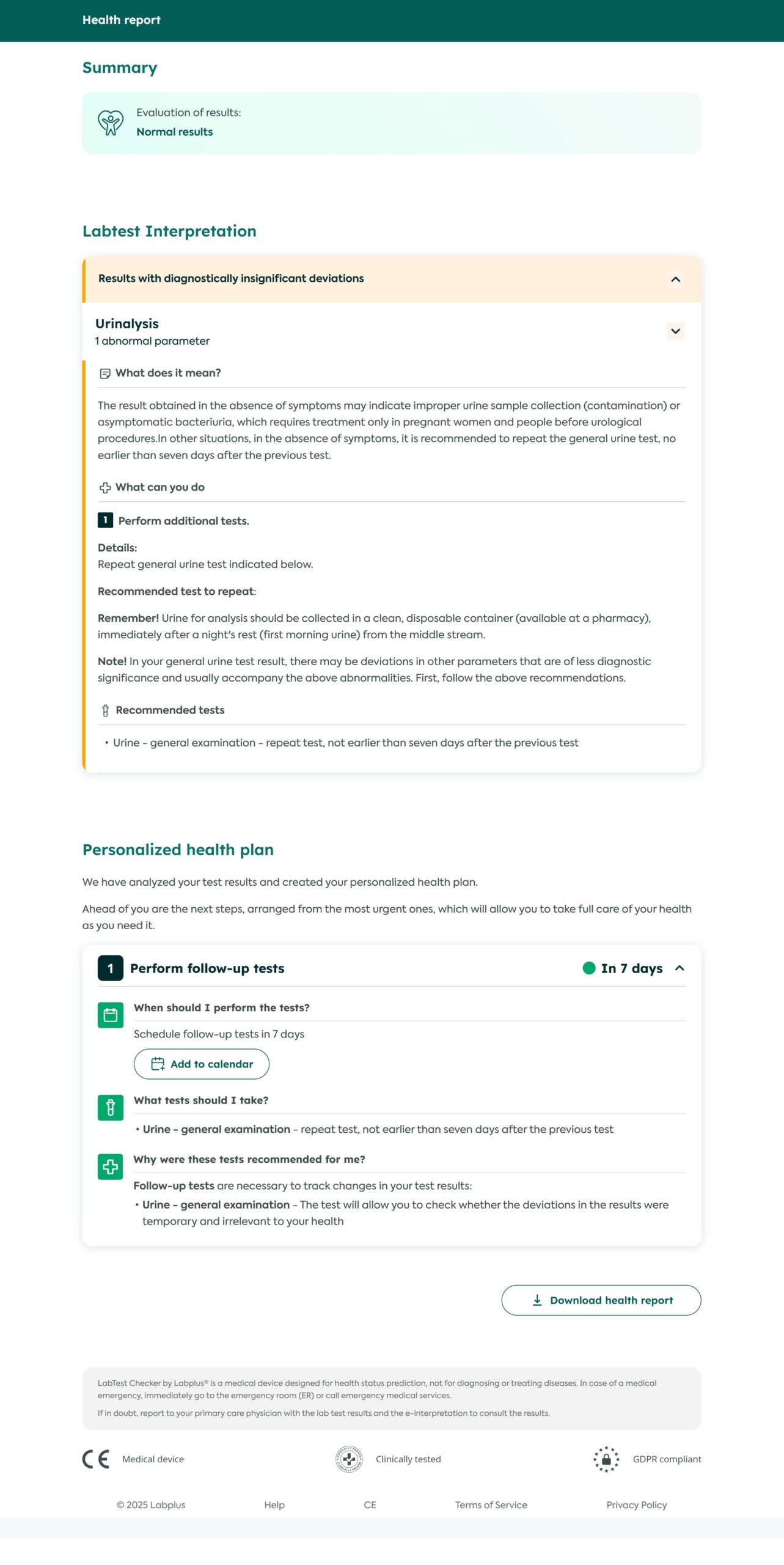Patient story
Elena is planning a pregnancy
Proactive retesting can save time, money and worry.

Context
32-year-old Elena had been thoughtfully preparing for pregnancy, following her doctor’s recommendations for preconception health. As part of her routine preventive screening, she underwent various tests, including a general urine analysis.
When Elena received her results, she noticed bacteria were detected in her urine. This was concerning to both her and her partner – did it mean she had an infection that could affect her pregnancy plans? She wasn’t experiencing any symptoms, which made the result even more puzzling.
Before calling her doctor’s office, Elena decided to get her results professionally interpreted to understand what this finding meant and what her next steps should be.
See the interpretation of Elena's results
Expert Commentary
The presence of bacteria in urine, with other parameters of general urine examination being normal in individuals without dysuric symptoms (i.e., pain, urgency during urination, frequent urination), most commonly indicates improper urine sampling, such as contamination, and does not require further diagnostics or antibiotic therapy.
In exceptional cases, it may indicate asymptomatic bacteriuria, which requires treatment only in pregnant women and individuals undergoing urological procedures.
Physician, graduate of the Medical Faculty of Wrocław Medical University. She gained professional experience in primary care clinics and in the Department of Internal Medicine and Geriatrics at A. Falkiewicz Hospital in Wrocław.
Conclusion
The interpretation recommended that Elena repeat the urine test with proper collection technique. She followed this guidance, collected a new sample according to the instructions, and received normal results without any bacteria present. Thanks to understanding what her initial results meant, Elena avoided unnecessary worry and could confidently continue planning her pregnancy.




